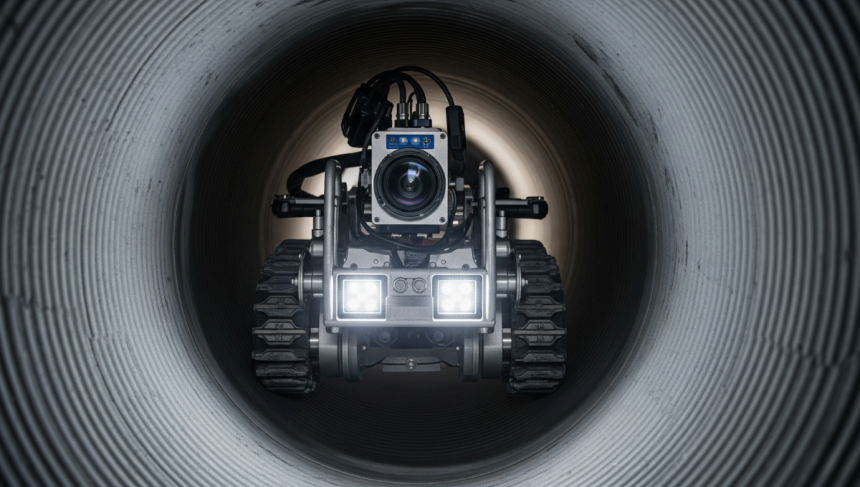When it comes to inspecting underground or confined pipeline systems, access is everything—and that’s where pipe crawlers come in. These smart, motorized devices are transforming the way engineers, utility workers, and maintenance teams inspect, monitor, and maintain critical infrastructure in environments that are otherwise dangerous or impossible to navigate by hand.
Whether you’re dealing with municipal sewage lines, industrial piping, or storm drains, a pipe crawler offers a high-tech, non-invasive way to detect issues before they become costly problems.
What Is a Pipe Crawler?
A pipe crawler is a remotely operated inspection device designed to move through pipelines and tight spaces. Typically mounted on wheels or tracks, it’s equipped with a high-resolution camera, LED lighting, and sensors that allow operators to visually inspect the interior condition of pipes in real time.
Some advanced models are also equipped with sonar, laser profiling, tilt sensors, or gas detectors, making them versatile tools for in-depth diagnostics.
Key Features and Capabilities
1. High-Definition Video Inspection
Modern pipe crawlers capture clear, real-time footage, helping teams identify cracks, blockages, corrosion, root intrusion, or structural failures with incredible precision.
2. Remote Control Navigation
Operators control the device from a safe distance using a handheld controller or software interface. The crawler’s flexible design allows it to navigate bends, junctions, and varying pipe diameters.
3. Durable, Waterproof Construction
Built to withstand harsh environments, pipe crawlers are typically water- and chemical-resistant. This durability ensures reliability in sewer systems, industrial pipelines, and even underwater settings.
4. Modularity and Customization
Many pipe crawlers are modular, meaning they can be adapted to specific job requirements—whether it’s changing the wheel size for different pipe diameters or attaching specialized tools for sampling or cleaning.
Applications Across Industries
Pipe crawlers are used in a wide range of fields, including:
-
Municipal Infrastructure: For sewer and storm drain inspections
-
Oil & Gas: To examine petroleum pipelines for corrosion or leaks
-
Power Plants: For internal inspections of cooling or steam lines
-
Construction: To verify installation and integrity of new piping
-
Environmental Monitoring: To detect contamination or sediment buildup
By providing detailed visual data without the need for excavation or shutdowns, pipe crawlers help save time, reduce costs, and improve safety.
Benefits of Using a Pipe Crawler
-
Non-destructive Testing (NDT): No need to dig or cut into the system
-
Improved Safety: Reduces risk to personnel by avoiding confined space entry
-
Faster Diagnoses: Spot problems early and plan targeted repairs
-
Cost-Effective Maintenance: Avoids large-scale damage and unplanned outages
-
Data Documentation: Video and images can be archived for compliance and future reference
The Future of Pipe Crawlers
With advancements in AI, robotics, and data analytics, next-generation pipe crawlers are becoming smarter and more autonomous. Some models now use AI-powered image recognition to detect defects automatically, while others integrate GPS or mapping technology to build 3D models of pipe interiors.
As infrastructure ages and demands for smarter maintenance increase, pipe crawlers are poised to become an essential tool in every utility and engineering team’s toolkit.
Final Thoughts
The pipe crawler isn’t just a piece of equipment—it’s a game-changer in pipeline inspection. By delivering safe, precise, and detailed access to areas once considered unreachable, it empowers professionals to make informed decisions, reduce risk, and extend the life of vital systems.







